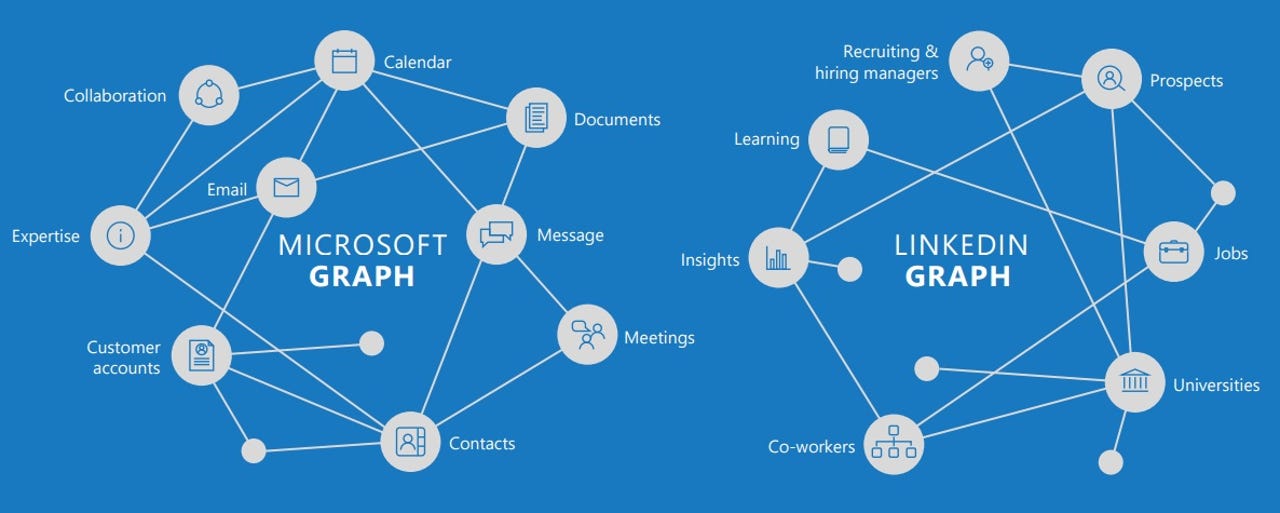Why Microsoft just bought LinkedIn: It's all about the data

In its biggest acquisition in its corporate history, Microsoft bought social-network vendor LinkedIn today. But why?

The tl;dr reason: It's all about the data.
The slightly longer version: For the potential synergies involving Microsoft's Office 365, Dynamics CRM/ERP and advertising products and services.
Microsoft's slide deck that outlines potential scenarios involving the two companies emphasizes that management view the deal as connecting the "world's leading professional cloud" and "the professional network."
Microsoft and LinkedIn have both been building out their respective graphs. Microsoft's graph is a collection of information pertaining to entities like contacts, messages, calendar entries and documents. LinkedIn's graph centers around entity information regarding jobs, coworkers, learning, prospects and recruiting/hiring.
The contention is there's relatively little overlap between these two graphs, which makes the acquisition make more sense than, say, a Microsoft acquisition of Slack -- where capabilities and technologies overlap quite a bit. Connecting these two graphs is where Microsoft execs are betting the magic will happen.
The emphasis of Microsoft's LinkedIn unit, going forward, will be on ways "to make professionals more productive."
Microsoft is counting on LinkedIn to help with the consolidation of business users' profile data across apps and services; the development of a consolidated professional newsfeed with information on users' contact network, industry and profession; and the surfacing of more potential Cortana integraion points, according to the slide deck.
Some of the potential scenarios Microsoft officials are envisioning includes better prospect and customer information for Dynamics CRM (and non-Microsoft CRM systems) and overall improved knowledge-management capabilities for Office 365 and Dynamics CRM and ERP. Social learning is another potential area where LinkedIn -- and its Lynda.com training capabilities -- could complement what Microsoft's doing around certification and education across its product lines.
Bing, too, could benefit from integrating with LinkedIn by becoming "the best professional search," Microsoft officials believe. And there's the whole HR angle to the transaction, outlined by my ZDNet colleague Larry Dignan.
Eleven alternatives to LinkedIn for business social networking
LinkedIn doesn't (yet) run on Microsoft's Azure cloud. (Nor does Office 365, for that matter.) But one of Microsoft's first priorities, no doubt, will be to tie LinkedIn into Microsoft's Active Directory and Office 365 single sign-on.